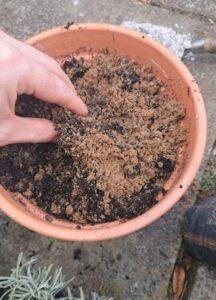Thyme plants are a delightful addition to any herb garden, but sometimes they can experience some trouble, like turning brown. In this article, we will explore the various reasons why thyme plants turn brown and discuss practical solutions to keep them healthy and vibrant.
Thyme Turning Brown due to Moist Soil
Thyme plants are native to the Mediterranean region, where they thrive in full sun and well-draining sandy soils. Excessive moisture around the roots can lead to fungal diseases that cause thyme plants to turn brown. Overwatering and slow-draining soils provide the perfect conditions for these pathogens to take hold.
Causes of Thyme Turning Brown due to Moist Soil
There are three main reasons why thyme plants may turn brown due to excess moisture:
-
Overwatering: Thyme is a drought-resistant herb that prefers somewhat dry conditions. Watering your thyme before the soil has a chance to dry out can lead to overwatering, causing it to turn brown.
-
Slow draining soils: Thyme plants thrive in porous, well-draining soil. If the soil retains too much moisture, such as clay soil, fungal diseases like root rot can develop, causing the thyme to turn brown.
-
Pots without drainage holes: When planting thyme in pots or containers without proper drainage, excess water becomes trapped, leading to soggy soil and root rot.
Save Thyme That is Turning Brown Due to Moist Soil
Reviving a thyme plant that is turning brown is possible with a few simple steps:
-
Scale back watering: Thyme prefers the soil to dry out between waterings. Adjust your watering schedule to allow the soil to dry partially between bouts of watering.
-
Transplant to well-draining soil: If your thyme is planted in slow-draining or boggy ground, consider transplanting it to a pot with a mix of 70% multipurpose compost and 30% sand or grit. This will improve drainage and recreate the ideal growing conditions for thyme.
-
Ensure proper drainage: Make sure your thyme is planted in a pot with good drainage. Clay or terracotta pots are excellent choices, as they allow the soil to dry out efficiently. Ensure the pot has several drainage holes in the base to let excess water escape.
 Thyme plants flourish in soil with good drainage.
Thyme plants flourish in soil with good drainage.
Remember to inspect the roots when transplanting. Trim any brown or rotten sections, and disinfect your pruners with alcohol after each snip to prevent spreading the fungus. Finally, shelter the thyme plant from excessive rainfall and place it in full sun for optimal growth.
High Humidity Causes Leaves to Turn Brown
Thyme plants prefer arid climates with low humidity. When planted too close together, they can create a humid microclimate that promotes diseases like Alternaria blight, resulting in brown spots on the leaves.
To prevent this, ensure there is adequate space between thyme plants, typically around 2-3 feet apart. This allows for airflow, reducing the risk of disease. Planting thyme in pots is also an excellent way to increase airflow and maintain healthy plants.
Thyme Turning Brown Because of Age
Thyme is a perennial plant that can live for several years. However, after around 4 or 5 years, the leaves may begin to turn brown naturally, even with proper care. At this point, it’s advisable to replace your old plants with new ones for the best flavor and productivity.
Key Takeaways
- Thyme plants turn brown due to excess moisture around the roots, which can lead to fungal diseases.
- Overwatering, slow-draining soils, and pots without drainage holes are common causes of thyme turning brown.
- To save a thyme plant that is turning brown, adjust your watering schedule, transplant it to well-draining soil, and ensure proper drainage in the pot.
- High humidity can also cause thyme leaves to turn brown, so allow for sufficient airflow between plants.
- Thyme plants have a lifespan of around 4-5 years, after which they may turn brown naturally. Consider propagating thyme to maintain a fresh supply of flavorful leaves for cooking.
By following these tips, you can ensure that your thyme plants stay fresh and green, adding a flavorful touch to your culinary adventures.

